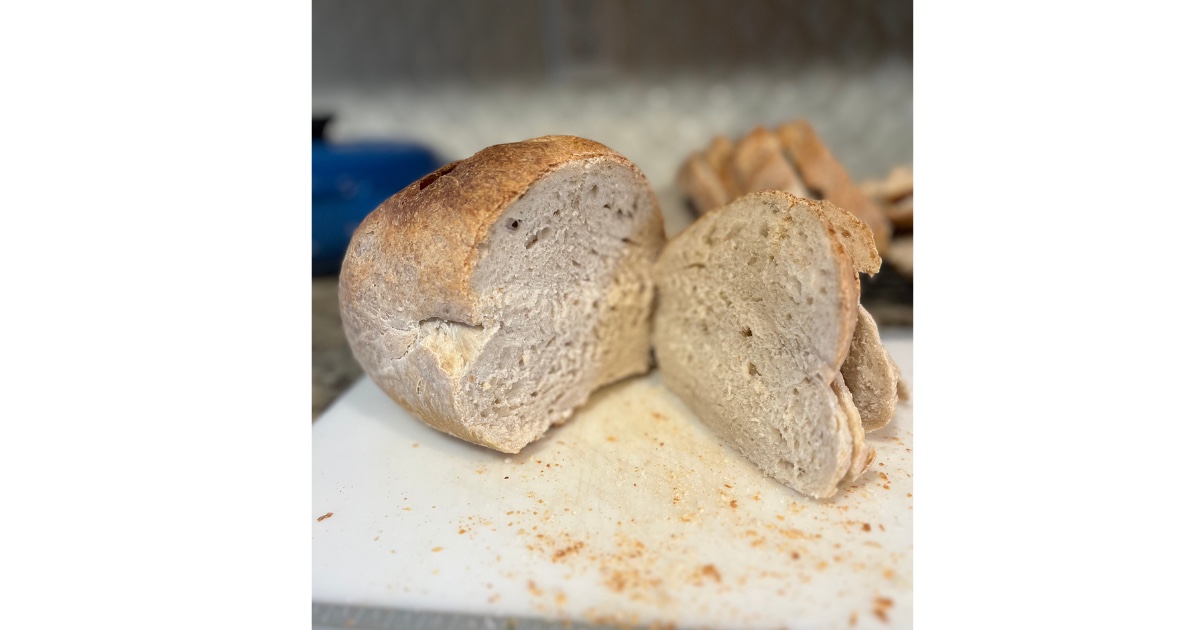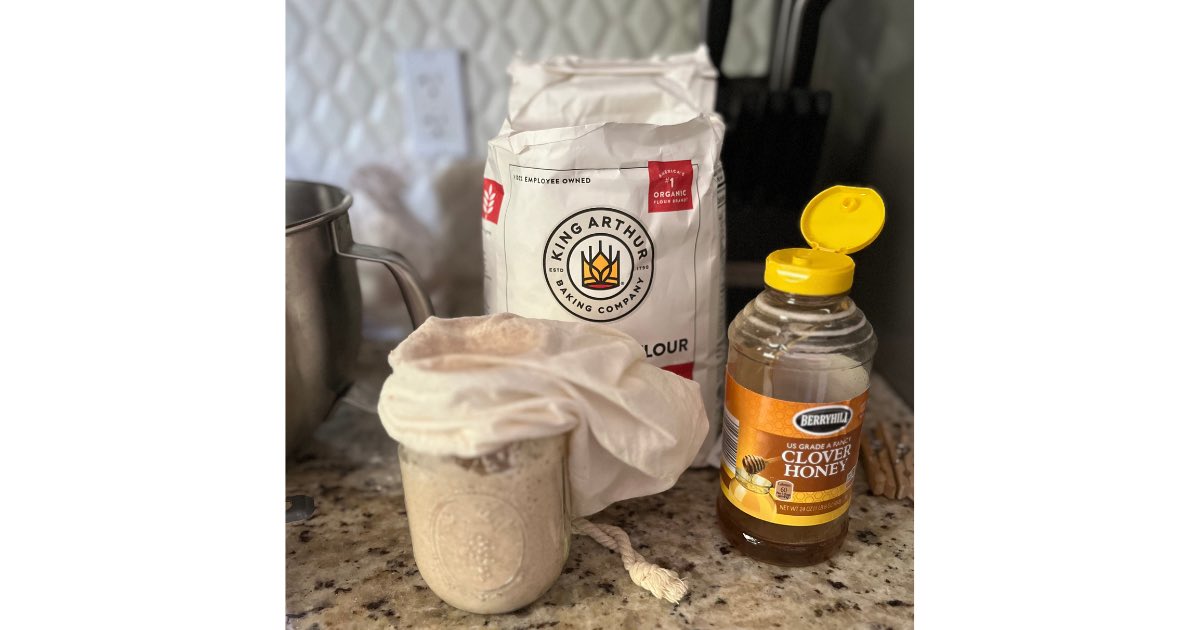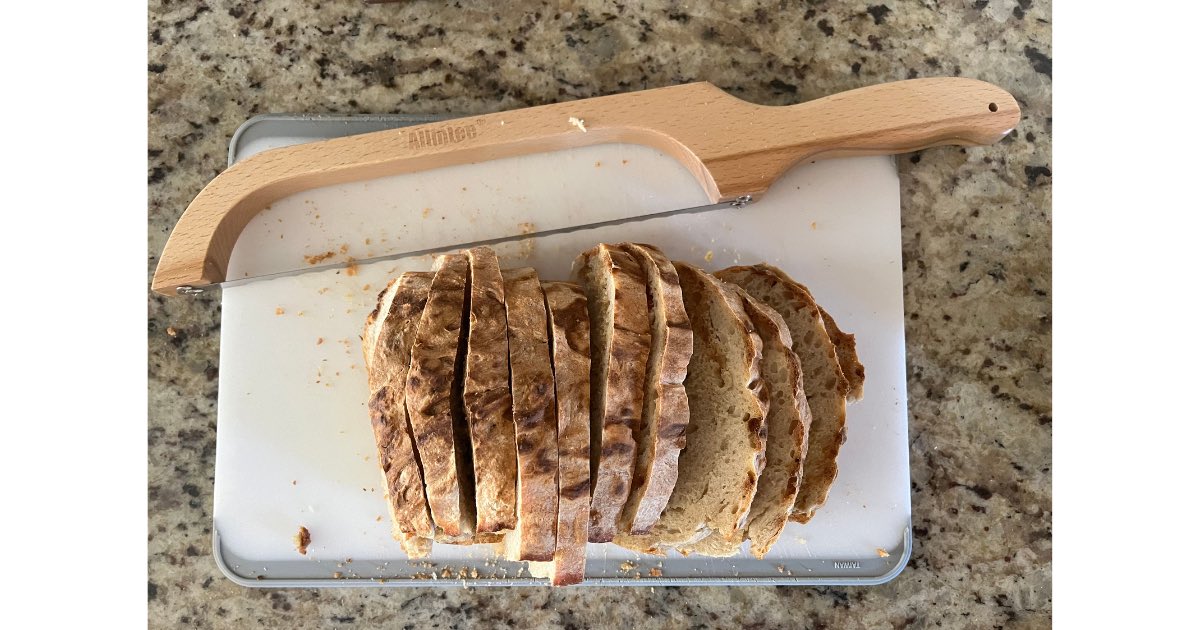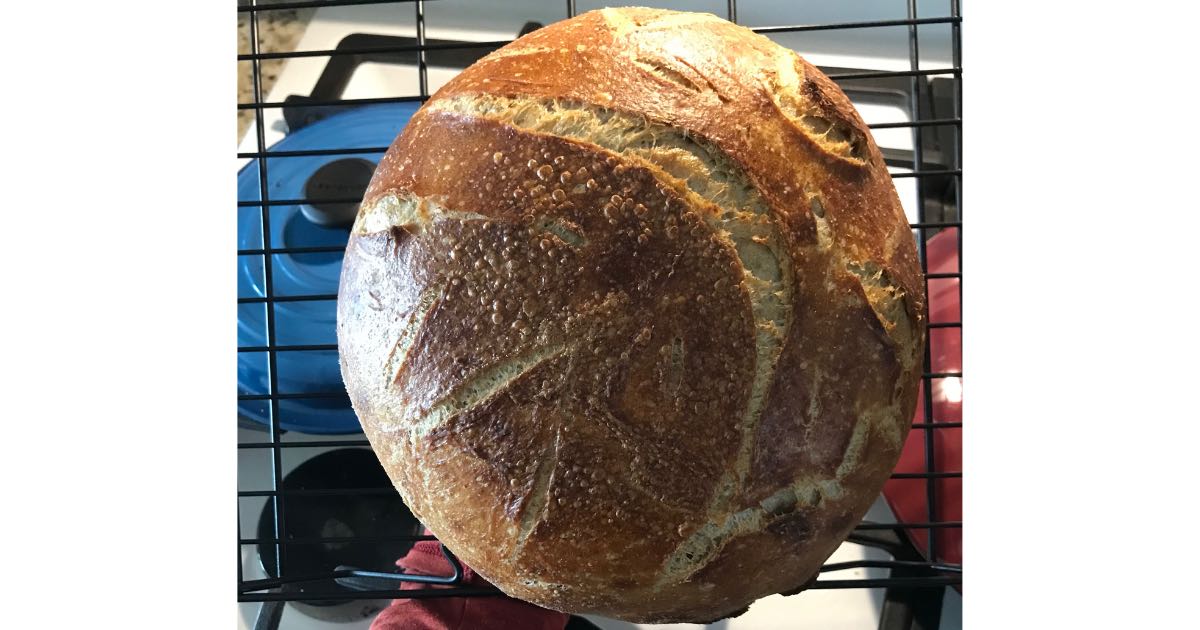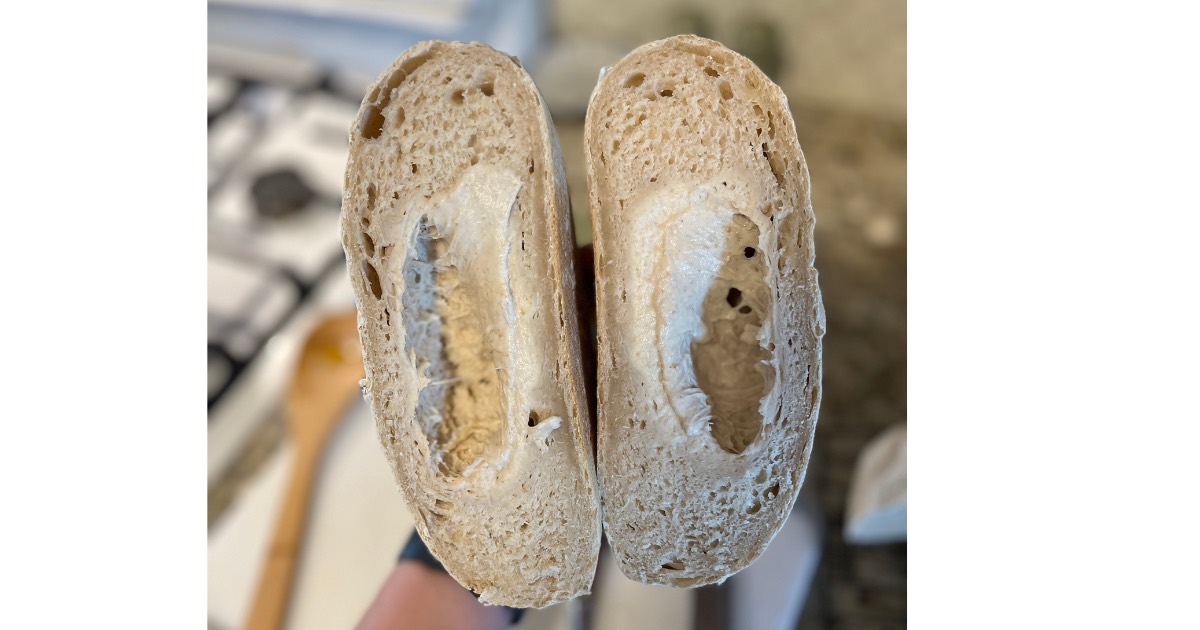Once you have made a sourdough starter you will want to make your first sourdough baked good. You may be asking yourself ‘when is my sourdough starter ready to bake with’? This article will teach you the signs of a mature sourdough starter along with the tests for readiness so you can be well on your way to a delicious loaf of sourdough bread!
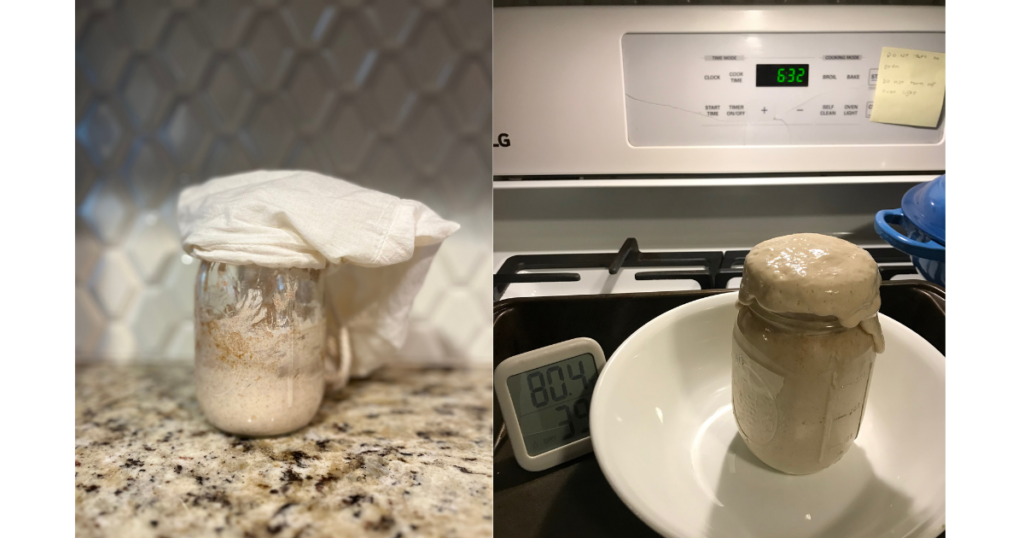
My first sourdough starter was a bust. The recipe had me using a cup of flour and a cup of water each day to feed it. There was so much discard I felt like I was literally pouring money in the trash.
As I spent so much time (and money on flour) making a sourdough starter from scratch, I almost threw in the towel. But I knew there was another way. I tried a different recipe and simply waited the first few days before I saw any activity.
I then created my own tips for how to create a sourdough starter with less discard. By day 4, my sourdough starter was showing signs of activity. While picturing the end goal (homemade sourdough bread), I sat there thinking ‘is my sourdough starter ready to bake with?’.
How should a sourdough starter smell?
Sourdough starter should smell sweet and tangy. It may smell like something which is fermenting. A healthy sourdough starter should not smell like vinegar, acetone, cheese or sweaty gym socks.
If your sourdough stater smells bad, you may have cultivated the wrong type of bacteria, had a bad batch of flour, or simply need to start from scratch and make a new sourdough starter.
Note, if a sourdough starter is hungry, it may begin to smell stronger and even acidic. By feeding a starter a 1:1:1 ratio, or doing a dry feed, the smell should go away and the starter should double in size.
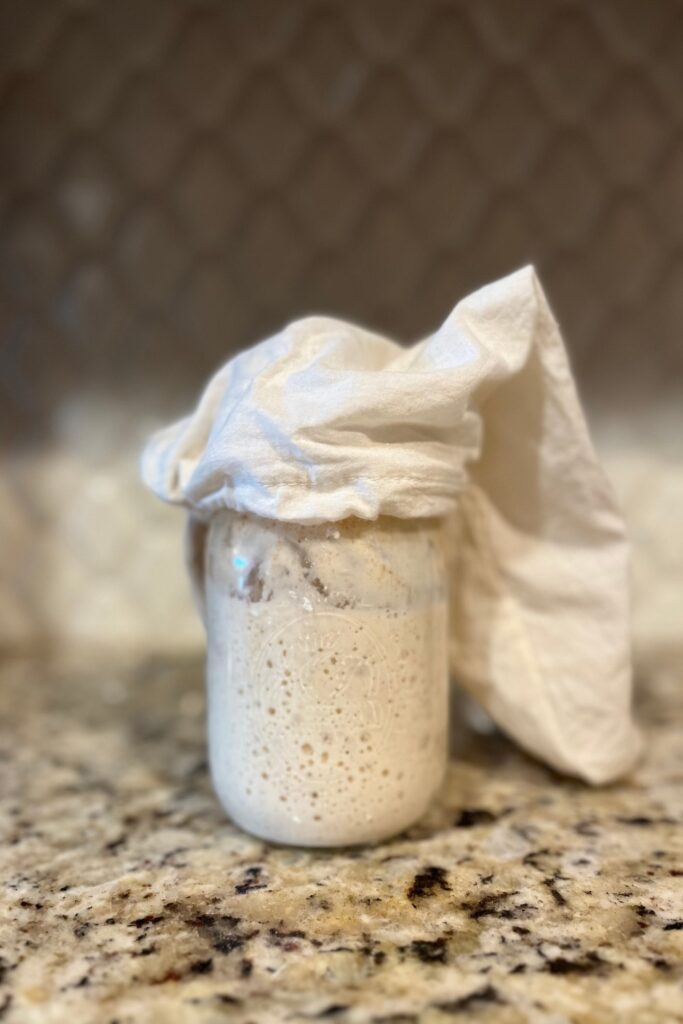
What does sourdough starter look like?
Sourdough starter has a distinct look. It is a mixture of flour, water and wild bacteria found in the air which creates fermentation.
As the bacteria eats the flour, it forms the bubbles we see as a way to ‘off gas’. The bubbles can range in size and density.
Sourdough starter has an almost honeycomb or sponge like appearance. It is a connection of bubbles which appear upon the surface and throughout the sourdough starter.
When a spoonful is lifted, or when it is stirred, it will be light and airy. When stirred, it will have a stretchy texture. It will not easily break apart when the spoon is pulled up.
The thickness of your sourdough starter will depend on how much a sourdough starter has been fed, the type of flour it has been fed and how recently it has been fed. A hungry sourdough starter is typically runnier than a recently fed sourdough starter.
Sourdough Starter Tests
There are two different ways to ‘test’ the maturing of a sourdough starter. The sourdough starter float test and the sourdough starter rubber band test.
Sourdough Starter Float Test
To complete the float test, take a spoonful of your sourdough starter when it has reached its’ peak and place it in water. Do not stir the two together.
If the sourdough starter floats in the water, it is ready to bake with. If it does not float, it is not ready to make with. The theory behind this test is starter at its’ peak has the most gas present. This would cause it to float in the water. This gas present would cause a baked good to rise.
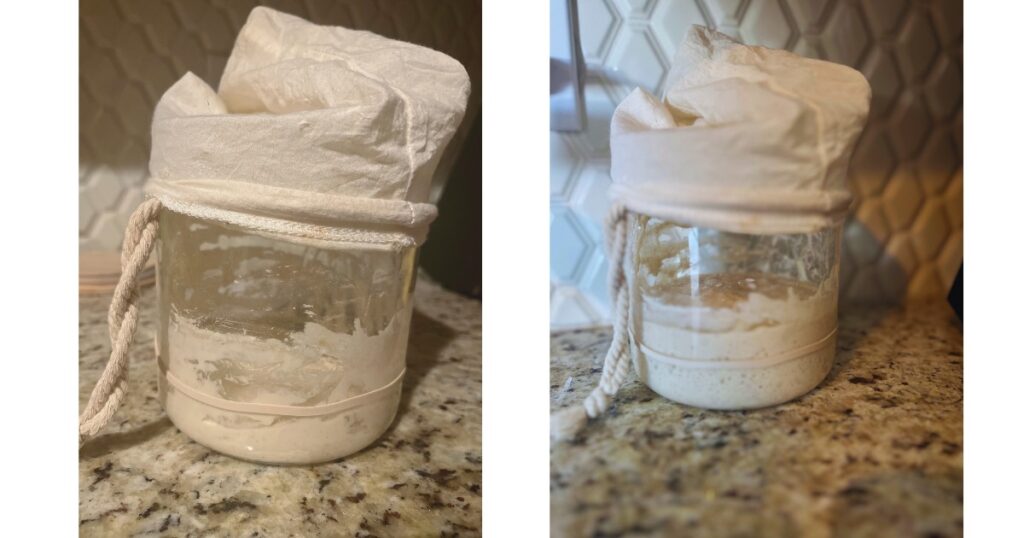
Sourdough Starter Rubber Band Test
To complete a sourdough starter rubber band test, feed your sourdough starter and place a rubber band around your sourdough container to mark where it started.
In a few hours (4-12 hours), check back in to see if it has doubled (or tripled) in size. If it has doubled in size, it is ready to bake with. If it is not, wait before baking.
The amount of time it takes for a sourdough starter to double (or triple) can vary depending on the ratio of flour and water added to feed the starter. The temperature of your home can also impact how quickly a starter rises. A rule of thumb it typically takes 4-12 hours to reach a ‘peak’.
When beginning a sourdough starter from scratch, we know it can take a few days for a new starter to double in size. This is because the wild yeast is building and the amount of fermentation is increasing.
If the sourdough starter is maintained by keeping it in the fridge as opposed to keeping it on the counter, this can also cause it to rise slower. This is due to the cold core temperature from being in the fridge.
An alternative method to tracking the rise and fall of a sourdough starter is to use an erasable marker or tape to track where the sourdough starter began after a feeding.
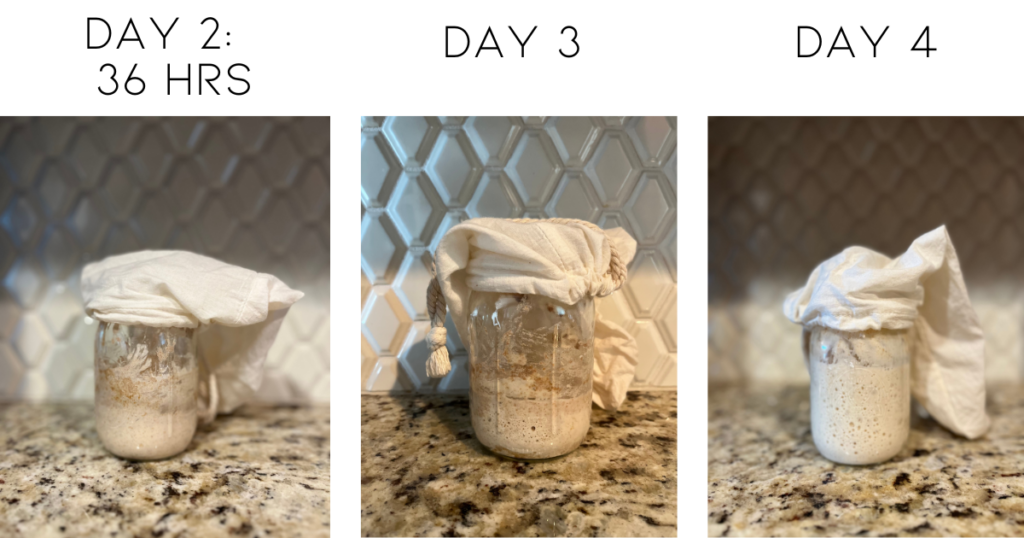
How long does it take for a sourdough starter to be ready?
As you can see, from a date perspective, there is no hard set timeline in regards to when sourdough starter will be ready. From the time a sourdough starter is created, it can take upwards of 7-14 days before a sourdough starter is ready to bake with.
It can take even longer for it to mature – meaning it doubles in size quickly, smells distinct and helps all baked goods to rise well.
It is not surprising to feel like the first few sourdough recipes are underwhelming as the starter is not mature. While a sourdough starter can be ready to bake with, it’s strength may lead to under proofed bread, doughy recipes or baked goods which do not rise as much as anticipated.
Some people say a mature sourdough starter takes 3-4 montshs before it is strong. In the meantime you can still have bread and baked goods which come out beautifully and taste great.
With a little patience and trial with different methods to test the maturity of sourdough starter, you will be well on your way to a great loaf of sourdough bread, bagels and more!
How long did you wait before cooking with your sourdough starter? Do you remember what your first baked good was? Share with us in the comments below!

